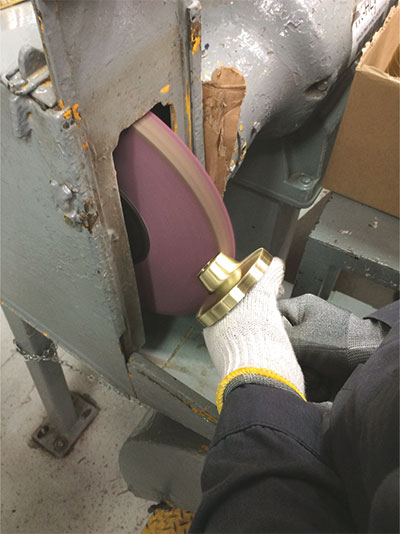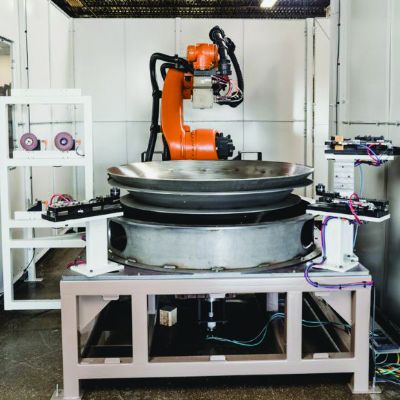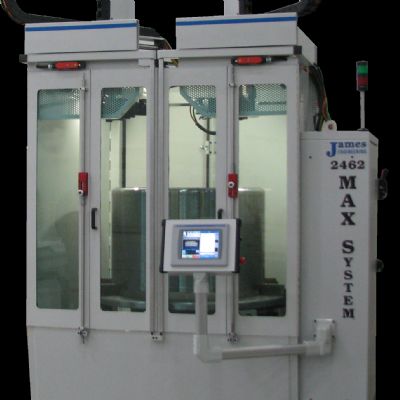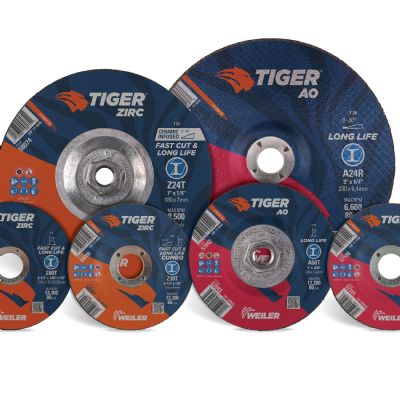Meaning Behind the Specs.
Grit refers to the size of abrasive grains in the nylon web. Non-woven abrasives feature various grit sizes, from coarse—50 to 80 grit, often used for general cleaning—to micro-fine—1000 to 1200 grit, suitable for light scuffing and blending. Lower numbers mean larger grains. Grit material may be silicon carbide or aluminum oxide. A sharper grit, aluminum oxide cuts quickly and imparts finer scratch patterns on the majority of surfaces. On the other hand, aluminum oxide is more durable and finishes more aggressively on hardened steels while producing less discoloration on aluminum.
Density concerns the amount of bonding agents and abrasive grain compressed into the product. While softer densities offer improved conformability to work surfaces and less tendency to burn a workpiece, harder densities in general cut faster, last longer and provide finer finishes.
Manufacturers of non-wovens create fiber sizes and bonding agents based on the intended application, with both affecting the operational characteristics of a product. The industry continues efforts to evolve non-woven technology, especially related to bonding agents. As grinding and finishing operations generate significant heat, some resins can break down, causing marks or stains on parts. While okay for grinding operations such as deburring, finishing requirements demand improved surface quality, which then adds time and cost to the finishing process. Improvements in bonding agents include new resin systems that can deliver stain-free finishing with equal or improved product life. That means lower costs and less downtime due to rework or added finishing steps. Improved bonding systems are important in certain aerospace and automotive markets where heavy-element trace contaminants can be an issue. Much of the information above is contained in typical specification listings for non-woven abrasive products. For example, you may see the following specification: 8 A/O MED, where 8 = density, which can range from 2 (open/most conformable) to 9 (densest/most durable) A/O = the abrasive used (A or A/O refers to aluminum oxide) MED = grit size (medium, 100 to 150 grit) What’s Best for My Application? The right non-woven abrasive product depends on the particular application, with all of the above and more taken into account. But even with selection of the right products for a particular job, day-to-day operations may lead to confusion, as non-woven abrasive products have tended toward a similar look regardless of grit size and material. That is being addressed. For example, a recent innovation has brought color coding to non-woven convolute wheels, differentiating application groupings as well as grit material. The result is simplified selection and day-to-day use. MF Information for this article supplied by Norton | St. Gobain Abrasives, Worcester, MA; tel. 254/918-2313, www.nortonabrasives.com.
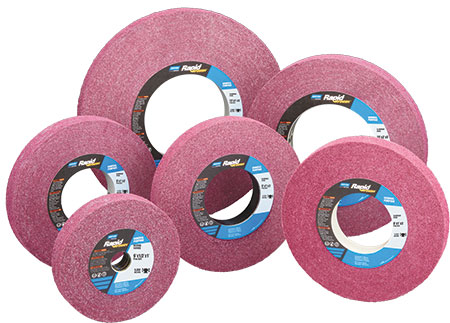
Non-woven convolute wheels, made by wrapping non-woven material around a center core and bonding together the layers, can easily be shaped to match preformed parts.
View Glossary of Metalforming Terms
See also: Norton Abrasives
Technologies: Finishing, Other Processes






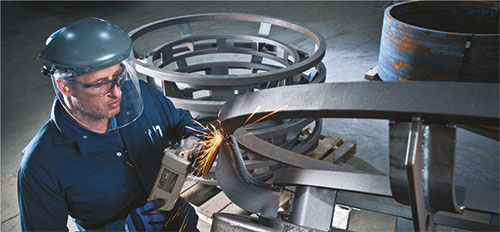 A part isn’t finished until it’s finished. Post-process deburring, cleaning and other finishing tasks deliver a final part with ideal surface quality. Abrasive products, such as bonded and coated abrasives, often get the call to remove part stock during production. But for final surface finishing, non-woven abrasives are ideal.
A part isn’t finished until it’s finished. Post-process deburring, cleaning and other finishing tasks deliver a final part with ideal surface quality. Abrasive products, such as bonded and coated abrasives, often get the call to remove part stock during production. But for final surface finishing, non-woven abrasives are ideal.